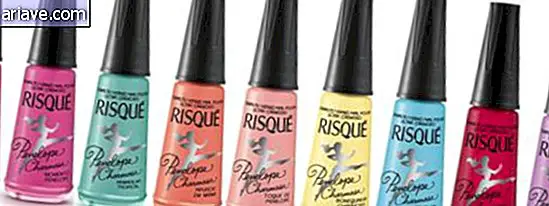Nothing is what it sounds like: the biggest tricks used in model photos
Unsurprisingly, all the advertising photos that surround us go through many editions: the famous “Photoshop”. However, a photographer who worked for a long time in the area decided to reveal the true secrets of these images; And believe me, they happen long before the click.
The photographer's idea, which she chose not to identify with, is to show how unreal the bodies we see and what our role in society is as propagators of these 'ideals of beauty'.
Retouching before Photoshop
It's undeniable: All professional photography requires editing. It could be the color of the garment, which didn't go as it should or an insect that appeared at the wrong time. According to the photographer, this work is necessary for the photo to be printed correctly, but at some point someone thought "if you can manipulate the background, why not the body?", And that's when it got out of hand.
One of his main works was with Victoria's Secret models, known for their perfection. But she says it's not like that: “The first thing they do is put extensions on their hair to increase volume and / or length. I guess I never took a picture of a model with her real hair. Then they fix some breast fillers and put on an altered swimsuit that shapes the body - if you could catch it, you would feel the weight. ”

This is one of the main reasons why a swimsuit never looks as good on our body as a model's.
On top of that, they still put a bra - more stuffed - under the swimsuit, and the editors turn to take away any remnant that might appear in the photo. But it's not just Victoria's Secret that uses this trick; According to the professional, this is a very common practice and, therefore, we see so many “antigravity” breasts out there.
No one is like this in real life
After the “click” comes the digital edition: taking off your bra, erasing your nipples, making your breasts rounder, taller, more symmetrical and clear: bigger.
But it doesn't stop there: There are several fixes that may go unnoticed. Among the revelations, the mysterious woman said that on camera we can all have our hands and feet in shades of blue in addition to the gray armpits. No matter how well a man shaves, there will still be shade in that region.

She says that many models do not shave and if they appear with their arms up, they will not accept the hairy armpits in the photos. More work for editing.
Believe me, they are thinner than you think
If you think the main practice is to lose girls in images, know that it is very common to “put them on”. According to the photographer, the models are thinner than you actually see. This is why they often disguise their protruding ribs.
Now you might be thinking, "Why don't they hire girls who aren't so skinny?" The answer is simple: they do not sell.

She says this is where the story gets really ugly: During her time working with the beauty world, she saw companies trying different patterns of models, but consumers simply didn't respond positively.
It's all about the money
The great reality is that the only goal behind so many edits and modifications is to sell some product. And, of course, brands want to reflect the world the way we - the consumer public - want to see. We are so used to perfectly symmetrical bodies that the ordinary repels us. So we continue to spin the “perfect and nonexistent-looking machine”.

The company that made it different
“Aerie” is a company that sells lingerie and, in 2014, ventured and launched a “real” beauty campaign, in which she used models with different shapes and chose not to retouch the photographs.
With the great success of the initiative, the company began to invest even more in its new standard, which could be a good reason for celebration, but the photographer warns: none of this was out of kindness. “They did it because they wanted to see if it would sell. It was not for anyone to feel good about his own body, ”he reveals.

The problem is not just in the industry
It would be quite simple if we could focus the problem on the big brands that sell “beauty”, but photographic manipulation has become part of our daily lives. Just look at Instagram, for example: it's another reminder that this published life is not real. She points out that many people are repeating tricks used by professional photographers, such as framing and lighting, and this is part of image manipulation.
This whole change, which includes shrinking to the size of the female neck to look more delicate, has also been affecting children. Of course, they don't go through the same touches as adults, but it's part of the routine to change something about them, such as leaving them with a "less tired" look.

The body exchange
For some time now, we have come across news of actresses, singers and other personalities complaining about their extremely altered photographs in publications. This was the case of actress Lena Dunham of the series "Girls": "it is a strange feeling to see a picture and not recognize his own body, " revealed after seeing its cover in the magazine "Tentaciones".
As absurd as it sounds, it is common to simply change the whole body at the time of editing. That's right you read: they take one person's head and put it on another body! Or at least some pieces, like the arms.

Things are changing ... But not so much
As she moves away from the beauty market, she says she is alarmed by the new trend of having an hourglass-shaped silhouette. So while she is still stuck with some work, she has decided that she will no longer edit the waistlines or whiten teeth or eyeballs.
Still, there are some practices she can't get rid of: removing acnes, cellulite and stretch marks - "after all, you don't get almost 2 meters tall without gaining a lot of stretch marks", comments on the models.

She is happy with the small changes taking place in this industry, but knows that the biggest battle must take place in the minds of consumers.











